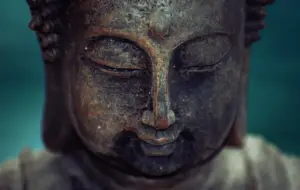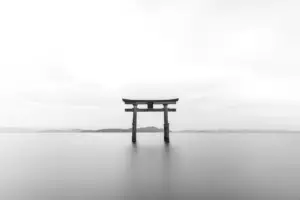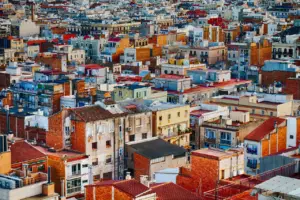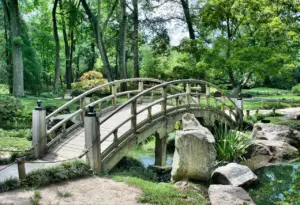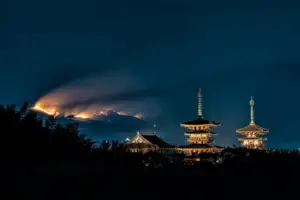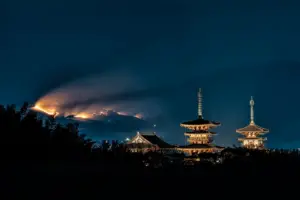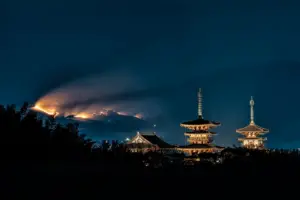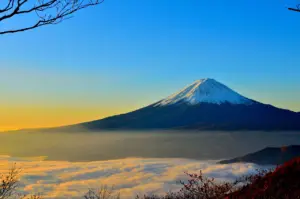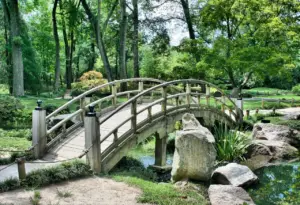Are you looking for a unique spiritual experience that involves exploring Japan’s rich culture and history? Consider embarking on a pilgrimage through one of Japan’s many spiritual routes.
Japan is home to numerous pilgrimage routes that have been travelled by people for centuries, seeking spiritual enlightenment, blessings, and purification. These routes take you through stunning natural landscapes, historic temples, and shrines that offer a glimpse into Japan’s fascinating religious traditions and beliefs.
In this article, you will learn about the most popular pilgrimage routes in Japan, their significance, and how to prepare for your journey. Whether you are a seasoned pilgrim or a curious traveller, exploring Japan’s spiritual pilgrimage routes can be a transformative experience that connects you with the country’s rich spiritual heritage and natural beauty.
So, put on your walking shoes, pack your backpack, and get ready for an adventure of a lifetime.
Key Takeaways
- Japan’s pilgrimage routes, such as the Shikoku Pilgrimage and Kumano Kodo, are deeply ingrained in religious and cultural traditions and play a significant role in shaping Japan’s religious identity.
- The pilgrimage routes are intertwined with cultural values of perseverance, humility, and respect for nature, and offer a transformative experience of self-discovery and personal growth.
- Proper footwear, clothing, physical fitness, and mental preparation are essential for a safe and comfortable journey, which can take up to 2 months and is often undertaken by the elderly seeking spiritual connection.
- Purification of mind and body is crucial for reaching enlightenment, and the pilgrimage routes offer an opportunity to connect with divine presence through natural environment and breathtaking scenery.
Overview of Japan’s Spiritual Pilgrimage Routes
You’ll be amazed by the diversity and significance of Japan’s spiritual pilgrimage routes. These routes have been an integral part of Japanese culture for centuries and continue to attract millions of pilgrims from all over the world.
The most famous of these routes is the Shikoku Pilgrimage, which consists of 88 temples spread across the island of Shikoku. This route is dedicated to the Buddhist monk Kukai, who’s said to have founded the Shingon sect of Buddhism.
Another popular route is the Kumano Kodo, which is located in the Kii Peninsula and is home to the three Grand Shrines of Kumano. This route is known for its stunning scenery and is considered to be one of the most important pilgrimage routes in Japan.
With so many routes to choose from, Japan’s spiritual pilgrimage routes offer a unique opportunity to explore the country’s rich spiritual heritage.
The History and Significance of Pilgrimage in Japan
If you’re interested in delving into the rich cultural history of Japan, it’s worth learning about the deep-rooted significance of pilgrimage and how it has shaped the country’s spiritual identity. Pilgrimage is a centuries-old practice in Japan, deeply ingrained in the country’s religious and cultural traditions. It involves visiting sacred sites and walking long distances to seek spiritual purification and enlightenment.
Pilgrimage has played a significant role in shaping Japan’s religious identity, particularly in the development of Buddhism and Shintoism. It has also contributed to the growth of Japan’s tourism industry, with millions of people visiting the country’s pilgrimage sites every year. The practice of pilgrimage is deeply intertwined with Japanese cultural values, such as perseverance, humility, and respect for nature. Understanding the history and significance of pilgrimage in Japan can provide valuable insights into the country’s cultural heritage and spiritual practices.
| Pilgrimage Route | Significance | ||
|---|---|---|---|
| Shikoku Pilgrimage | One of the oldest and most famous pilgrimage routes in Japan, with 88 temples and more than 1,000 years of history. | ||
| Kumano Kodo Pilgrimage | A network of ancient pilgrimage routes in the Kii Peninsula, known for its breathtaking scenery and spiritual significance. | ||
| Oyama Pilgrimage | A pilgrimage route in the Tochigi Prefecture that leads to the summit of Mount Oyama, one of the three sacred mountains in Japan. | Both the Kumano Kodo Pilgrimage and the Oyama Pilgrimage offer a unique opportunity to connect with Japan’s rich cultural and religious heritage while experiencing the natural beauty of the country. |
The Most Popular Pilgrimage Routes
Embarking on a pilgrimage in Japan means following ancient paths steeped in tradition and surrounded by stunning natural scenery. Among the most popular routes is the Kumano Kodo, a network of trails that lead to the three grand shrines of Kumano. This pilgrimage has been undertaken by emperors, samurais, and commoners for over a thousand years, and is considered a spiritual journey that purifies the soul and brings good fortune.
The Kumano Kodo is divided into three main routes, each with its own unique features and challenges. The Nakahechi route, for example, is the most popular and takes pilgrims through the mountainous region of Kii Peninsula. The Omine Okugake route, on the other hand, is known for its strict ascetic practices and is only recommended for experienced hikers.
Another highly revered pilgrimage route is the Shikoku Henro, which takes pilgrims on a circular journey around the island of Shikoku. The route covers over 1,200 kilometers and visits 88 temples associated with the Buddhist monk Kukai, who’s believed to have founded Shingon Buddhism in Japan.
The Shikoku Henro is said to be a journey of self-discovery, as pilgrims reflect on their lives while walking through the rugged terrain and interacting with the local communities. The pilgrimage can take up to two months to complete, and is often undertaken by elderly Japanese seeking to deepen their spiritual connection. Despite the physical and mental challenges, the Shikoku Henro remains a beloved pilgrimage route and is considered one of the most rewarding spiritual journeys in Japan.
How to Prepare for Your Pilgrimage
Before setting out on this transformative journey, take the time to research and prepare. It’s essential to have a good understanding of the route, terrain, and weather conditions. Researching the history and significance of the pilgrimage site can also help you better appreciate the cultural and spiritual significance of your journey.
It’s crucial to prepare physically and mentally for the pilgrimage. Pilgrimage routes in Japan can be physically demanding, with long hours of walking and steep inclines. Proper footwear and clothing, as well as physical fitness, are essential to ensure a safe and comfortable journey.
Mental preparation is equally important, as the pilgrimage can be emotionally and spiritually challenging. It’s essential to approach the journey with an open mind and heart, allowing yourself to be fully present in the moment and open to the transformative experience of the pilgrimage.
What to Expect on Your Pilgrimage
When you’re on your pilgrimage, you’ll encounter physical and mental challenges that can be both exhausting and transformative. The journey can be long and arduous, with many miles to cover on foot. You may have to climb steep mountains, cross rivers, and endure extreme weather conditions. The physical demands of the pilgrimage can be overwhelming, but they can also be a source of strength and resilience.
As you push yourself to your limits, you may discover a newfound sense of determination and perseverance. The mental challenges of the pilgrimage can be just as daunting. You may have to confront your fears, doubts, and insecurities. The solitude and silence of the journey can be unsettling, forcing you to confront your innermost thoughts and emotions.
However, this can also be a time of reflection and introspection. As you detach from the distractions of everyday life, you may gain a deeper understanding of yourself and your place in the world. The pilgrimage can be a transformative experience that challenges you physically, mentally, and spiritually, but it can also be a journey of self-discovery and personal growth.
The Spiritual Significance of Pilgrimage
As you embark on your pilgrimage, it’s important to understand the spiritual significance behind this practice.
One of the key reasons people undertake a pilgrimage is to seek enlightenment – a deeper understanding of the self and the world around us.
Another reason is to purify oneself, to rid oneself of negative emotions and thoughts that might be hindering personal growth.
Finally, pilgrimage is also a means of connecting with the divine, of feeling closer to a higher power or spiritual force.
These three reasons are interrelated, and the act of pilgrimage can help one achieve all three objectives simultaneously.
Enlightenment
Enlightenment is the ultimate goal for many pilgrims on Japan’s spiritual routes, offering a transformative experience through self-discovery and connection to the divine.
The concept of enlightenment, also known as satori or kensho in Japanese, refers to a state of spiritual awakening and the realization of profound truths about the nature of existence.
This state is often associated with Buddhism and Zen practices, but can also be found in other spiritual traditions.
Pilgrimage is seen as a means to achieve enlightenment by many, as it offers an opportunity to detach oneself from the distractions of daily life and focus on spiritual practice and introspection.
The physical challenges of pilgrimage, such as long walks or ascents up mountains, can also serve as a form of asceticism, encouraging individuals to let go of their attachment to material possessions and desires.
Through this process, pilgrims seek to gain a deeper understanding of themselves, the world around them, and their place in the universe, ultimately leading to a state of enlightenment.
Purification
Achieving purification of the mind and body is a crucial step towards reaching enlightenment on Japan’s spiritual paths. This purification process involves not only physical cleansing, but also mental and emotional cleansing. Many pilgrims participate in rituals such as misogi, which is a Shinto practice that involves standing under a waterfall to cleanse the body and mind. This practice is believed to wash away impurities and allow one to start anew.
In addition to physical cleansing, mental and emotional purification is also emphasized on Japan’s spiritual pilgrimage routes. Practices such as meditation and prayer are used to calm the mind and cultivate inner peace. The ultimate goal of purification is to rid oneself of negative emotions and thoughts, allowing for a clearer path towards enlightenment. As seen in the table below, pilgrims may experience a range of emotions during the purification process, from fear and discomfort to a sense of liberation and freedom. Through this process, one can gain a deeper understanding of oneself and the world around them.
| Emotion | Physical Response | Spiritual Significance |
|---|---|---|
| Fear | Increased Heart Rate, Sweating | Overcoming Fear, Building Resilience |
| Discomfort | Muscle Tension, Restlessness | Recognizing and Overcoming Limitations |
| Liberation | Euphoria, Lightness | Breaking Free from Negative Thoughts and Emotions |
Connection to the Divine
Connecting to the divine is an essential part of the pilgrimage experience, allowing pilgrims to experience a deeper sense of purpose and connection to the world around them.
In Japan, the spiritual pilgrimage routes are deeply rooted in Shintoism and Buddhism, both of which emphasize the importance of connecting to the divine. For Shintoism, the divine is present in all things, and the pilgrimage routes offer an opportunity to connect with this divine presence through the natural environment, such as mountains, rivers, and forests. For Buddhism, the divine is within oneself, and the pilgrimage routes offer a chance to connect with this inner divine through meditation and reflection.
Many of the pilgrimage routes in Japan are designed to facilitate this connection to the divine. For example, the Kumano Kodo pilgrimage route has a series of shrines and temples along the way, each with its own unique history and significance. These places offer pilgrims a chance to pause, reflect, and connect with the divine.
Similarly, the Shikoku pilgrimage route has 88 temples, each representing a different aspect of Buddhism and offering pilgrims an opportunity to deepen their understanding of the teachings and connect with the divine within themselves.
Overall, the connection to the divine is a vital component of the spiritual pilgrimage experience in Japan, allowing pilgrims to tap into a deeper sense of purpose and meaning.
The Natural Beauty Along the Pilgrimage Routes
As you walk along Japan’s spiritual pilgrimage routes, you can’t help but be mesmerized by the breathtaking natural beauty that surrounds you. From the towering mountains to the serene forests and crystal-clear streams, every step you take is accompanied by a stunning view. The pilgrimage routes are carefully selected to showcase the best of Japan’s natural beauty, making the journey not only a spiritual one, but also a visual feast for the eyes.
To fully appreciate the natural beauty along the pilgrimage routes, it’s important to take note of the following:
-
The changing seasons offer a different view of the landscape. Spring brings cherry blossoms and fresh greenery, while autumn showcases the vibrant reds and oranges of the changing leaves.
-
The mountains provide a natural barrier, creating a peaceful and serene environment for reflection and contemplation.
-
The streams and waterfalls along the routes provide a calming soundtrack, adding to the overall meditative experience.
-
The carefully tended gardens and shrines along the pilgrimage routes are not only a testament to the devotion of those who maintain them, but also a visual representation of the harmony between man and nature.
As you walk along Japan’s spiritual pilgrimage routes, take a moment to appreciate the natural beauty around you. The stunning scenery is not just a backdrop to your journey, but an integral part of it.
Frequently Asked Questions
What are some lesser-known pilgrimage routes in Japan that are worth exploring?
If you’re interested in exploring lesser-known pilgrimage routes in Japan, there are several options worth considering. One such route is the Kunisaki Peninsula Pilgrimage, located in Kyushu. This route offers a unique blend of Shinto and Buddhist traditions and features stunning natural landscapes.
Another option is the Dewa Sanzan Pilgrimage in Yamagata Prefecture. It involves climbing three mountains considered sacred in Shugendo, a Japanese mountain asceticism tradition.
Additionally, the Saigoku Kannon Pilgrimage in Kansai region is a popular but often overlooked route. It involves visiting 33 temples dedicated to the Buddhist goddess of mercy.
These pilgrimage routes offer a chance to experience Japan’s rich spiritual heritage and connect with the country’s cultural traditions.
Are there any specific rituals or customs that pilgrims must follow along the pilgrimage routes?
When embarking on a pilgrimage in Japan, there are several customs and rituals that must be followed in order to show respect to the sacred sites and traditions.
For example, it is customary to bow and offer a prayer at the entrance of each temple or shrine. Many pilgrims also wear white clothing as a symbol of purity, and carry a staff and a book to collect stamps from each location.
It’s also important to follow proper etiquette, such as refraining from talking loudly or taking photos in certain areas.
Overall, the pilgrimage experience isn’t just about visiting each site, but also about demonstrating a deep reverence and mindfulness towards the spiritual journey.
How has modern technology and tourism impacted traditional pilgrimage practices in Japan?
Modern technology and tourism have had a significant impact on traditional pilgrimage practices in Japan. With the rise of modern transportation, it’s become easier for pilgrims to travel to and from pilgrimage sites, leading to an increase in the number of visitors.
This has resulted in the commercialization of pilgrimage sites, with the development of shopping centers, restaurants, and souvenir shops around them. The use of technology has also changed the way pilgrims participate in the pilgrimage experience.
For instance, many pilgrims now use GPS devices to navigate their way through the pilgrimage routes. Additionally, social media has become a platform for sharing experiences and connecting with other pilgrims.
While these changes have made the pilgrimage experience more accessible and convenient, they have also altered the traditional spiritual significance of the pilgrimage.
Can non-Japanese pilgrims participate in these spiritual pilgrimage routes, and are there any cultural considerations to keep in mind?
As a non-Japanese pilgrim, it’s possible to participate in Japan’s spiritual pilgrimage routes, but there are some cultural considerations to keep in mind.
First, it’s important to respect the religious customs and traditions of the Japanese people, including bowing and offering incense at shrines and temples.
Additionally, it’s recommended to dress modestly and remove shoes before entering sacred spaces.
Learning some basic Japanese phrases can also show respect and make communication easier.
It’s worth noting that some pilgrimage routes may have specific rules or requirements for participation, so it’s important to research and prepare in advance.
By approaching the pilgrimage with an open mind and a willingness to learn and respect the culture, non-Japanese pilgrims can have a meaningful and fulfilling experience on these spiritual journeys.
Have there been any notable historical or cultural events associated with pilgrimage routes in Japan?
Notable historical and cultural events associated with pilgrimage routes in Japan are abundant. For instance, the famous Shikoku pilgrimage, which comprises 88 temples, has been a significant part of Japanese culture for centuries.
The pilgrimage route has been traced back to the 9th century when Kobo Daishi, a Buddhist monk, completed the circuit. In the 17th century, the route became more popular, and the pilgrims’ numbers increased substantially.
Another notable pilgrimage route is the Kumano Kodo, which has been in use for over 1000 years. This route was used by emperors and aristocrats as a means of spiritual purification. The Kumano Kodo is also associated with the Shinto religion, and it has been designated as a UNESCO World Heritage Site.
These events highlight the cultural and historical significance of pilgrimage routes in Japan.
Conclusion
Congratulations on exploring Japan’s spiritual pilgrimage routes! You’ve embarked on a journey that has been a significant part of Japanese culture for centuries.
Through pilgrimage, Japanese people have sought spiritual enlightenment, purification, and personal growth. You’ve discovered the most popular pilgrimage routes, learned about their history and significance, and prepared for your journey.
As you embark on your pilgrimage, you’ll encounter natural beauty and cultural landmarks that will enrich your spiritual experience. You may encounter challenges along the way, but they’ll help you grow and gain insight into yourself and the world around you.
Remember to approach your pilgrimage with an open mind and a respectful attitude towards the people, places, and traditions you encounter. May your journey bring you peace, wisdom, and a deeper understanding of yourself and the world.
Safe travels!











